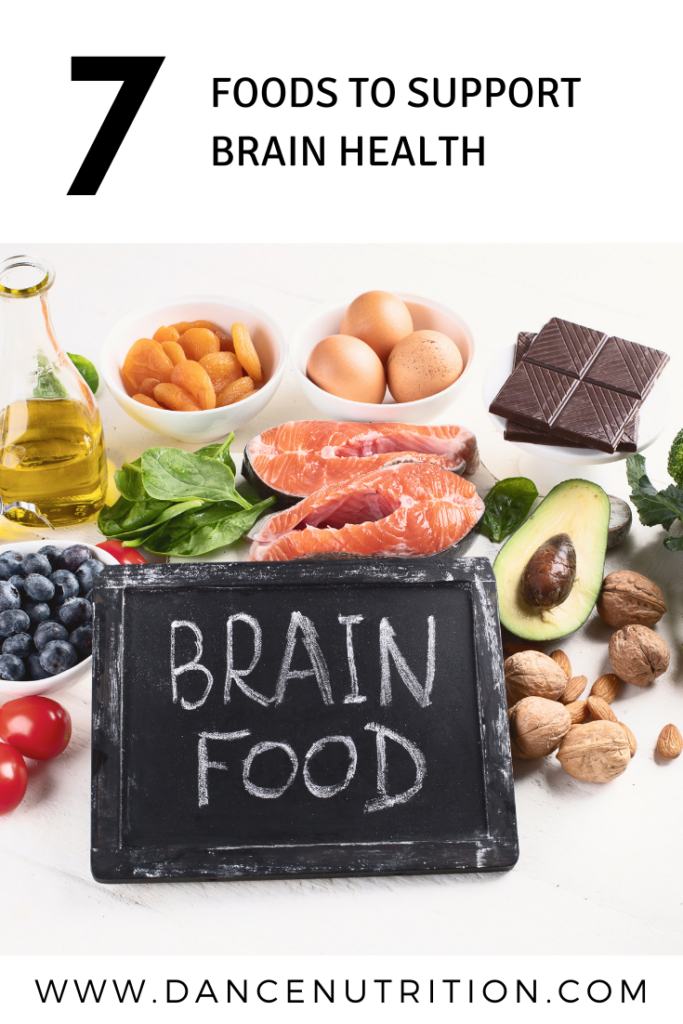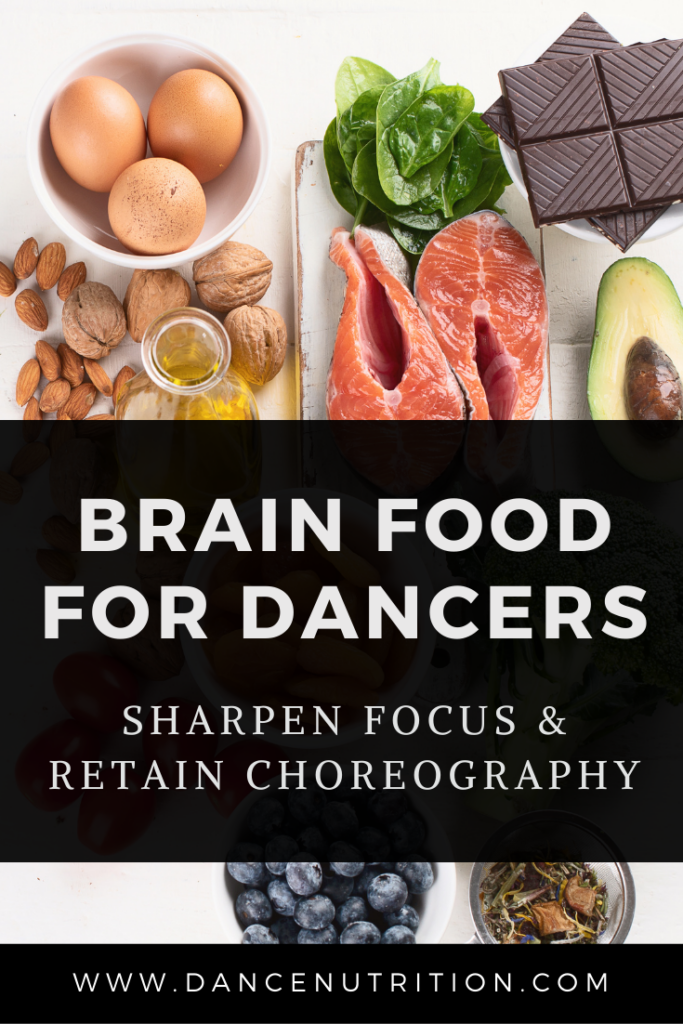We’ve all heard of “brain food,” but what does it mean? Can certain foods boost mental clarity, sharpen focus, and even improve memory retention? For dancers, the idea of enhancing brain function is particularly enticing— retaining choreography is vital not only for solid performances but also for successful auditions.
In this article, we’ll explore 7 foods that can support mental clarity, focus, and retention, especially for dancers. But remember, these 7 foods are not a cure-all for your brain’s health. And if you’re craving that chocolate cake, it’s not only okay to enjoy it— it’s likely just what your brain needs in that moment to function at its best!
The Impact of Dieting on Brain Health, Focus, and Retention
Diet culture often skews the idea of “brain food,” moralizing some foods while demonizing others. And while some foods can support brain functioning more than others, obsessing over them never helps. Before diving into the foods that can help, let’s address a few things that are not helpful for focus:
- Caloric restriction leaves your brain under-fueled, impairing focus, memory, and overall cognitive function.
- Obsessing over food and constantly thinking about what, when, or how much to eat creates mental clutter, making it harder to concentrate.
- Extreme diets or food rules lead to guilt and stress around food.
Food For Thought
Supporting brain function through gentle nutrition means embracing a few nutrition fundamentals without obsessing over them. By incorporating a variety of nutrient-dense foods into your daily routine, you’ll give your body the building blocks it needs for better cognitive function without falling into the trap of restriction. The key word here is gentle— it’s about nourishing your body and mind without stress or guilt.
7 Foods to Sharpen Focus and Retention
#1. Flax
Flax is rich in polyunsaturated fats, specifically omega-6 and omega 3 fatty acids. The brain’s physical structure is comprised primarily of a balance of these two essential fats (an “essential” nutrient is one that needs to come from food… our body cannot produce them on its own). Of these essential fatty acids, omega-6 fats are abundant in most foods. Flax, however, is predominantly high in omega-3 fats. Adding flax to your day helps to maintain the delicate balance of your brain’s structure between these two fatty acids.
#2. Bread
Carbohydrates are your brain’s preferred fuel source, breaking down into glucose to power your body and mind. When dancing, your energy stores deplete quickly— usually within 90 minutes of activity. Including whole grains, like bread, in your meals helps keep your glucose levels steady and supports both physical movement and cognitive performance, including retaining choreography and corrections. To learn more about the critical role of carbohydrates in your body, read this article.
#3. Colorful Veggies
Vitamins A, E, and C, which are abundant in colorful vegetables, are powerful antioxidants that combat oxidative stress and inflammation. Vitamin A (found in yellow and orange vegetables like peaches, apricots, mangoes, squash, carrots, and yams) protects brain cells, while Vitamin E (found in wheat germ, almonds, safflower oil, soybeans, peanuts, broccoli, and spinach) helps maintain the integrity of the brain’s fatty structure. Vitamin C is essential for collagen production, which supports brain tissue. To boost your intake, toss spinach, broccoli, carrots, bell peppers, and sweet potatoes into your meals. Leafy greens such as spinach are particularly potent with a variety of these vitamins, minerals, and antioxidants. A quick tip: add a handful of frozen spinach to your recovery smoothie.
#4. Lentils
Lentils are a complex carbohydrate that provides long-lasting energy in the form of glucose, a vital fuel for both physical performance and brain function. In addition, lentils are rich in B vitamins, which play an important role in reducing homocysteine, a byproduct of metabolism that, when in excess, can impair brain function. Lentils are easy to prepare in advance and make a great addition to salads, soups, or grain bowls.
#5. Dark Chocolate
Not only does dark chocolate taste amazing, but it also packs a punch when it comes to brain health. Rich in polyphenols and flavonols, dark chocolate helps repair oxidative damage in the brain. It also contains small amounts of caffeine, boosting focus and sharpening mental clarity— just what you need during a long rehearsal or class.
#6. Walnuts
Walnuts are loaded with omega-3 fatty acids, specifically alpha-linolenic acid (ALA), which the body converts into EPA and DHA— both essential for brain development and functioning. Adding walnuts to your diet can help support cognitive performance, improve memory, and enhance overall brain health.
#7. Eggs
Egg yolks are a powerhouse of choline, a nutrient that produces acetylcholine, a neurotransmitter crucial for memory, focus, and cognitive function. Choline is often grouped alongside B-complex vitamins because of its chemical similarities. If you’re not a fan of eggs, you can find choline in other sources like codfish, wheat germ, cauliflower, and spinach.
Brain Health: Key Takeaways
- No magic pill: While certain foods can support brain health, there’s no one-size-fits-all solution. A holistic approach to nutrition is key.
- Dismantle restrictive food rules: The mental energy spent on obsessing over food will ultimately detract from your ability to focus. Prioritize repairing your relationship with food to enhance cognitive function.
- Carbohydrates are essential: Glucose is your brain’s preferred fuel. Keep a steady supply of easy snacks like fruit, trail mixes, or crackers for rehearsals. Here’s a downloadable list of snack ideas.
- Fats matter: Polyunsaturated fats, found in walnuts, seeds, and fatty fish, support brain health and cognition.
- Antioxidants protect your brain: Vitamins and minerals from colorful fruits and veggies fight oxidative damage and inflammation.
The bottom line? Gentle nutrition, which includes a variety of nutrient-dense foods, is the most sustainable way to enhance mental clarity and focus.




